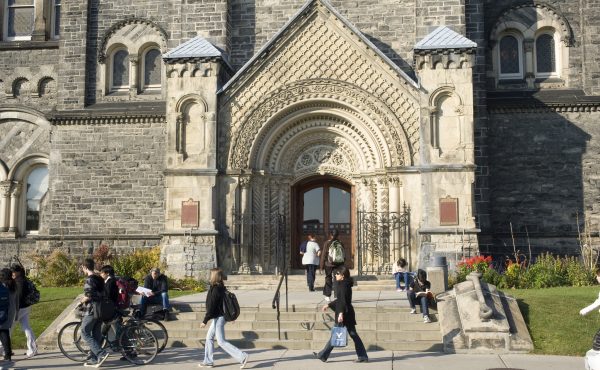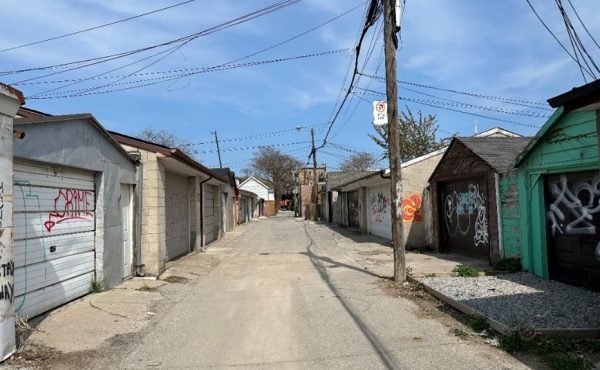
Cross-posted from No Mean City, Alex’s personal blog on architecture
![]()
Good news: Tower Renewal may be getting new life. With a new report, Tower Neighbourhood Renewal in the Greater Golden Horseshoe, there’s a sign the province is taking an interest in fixing the Toronto region’s many highrise neighbourhoods, even as Rob Ford’s crew seems to be dismissing the idea.
Why is this a big deal? Just look at the wish list: the government thinks that there’s potential here to address better transit, reduced greenhouse gas emissions, economic development, affordable housing and green industry.
Co-author Graeme Stewart of ERA Architects says the opportunity is huge.
 “The main purpose of the report is communication,” he told me: “to better understand what a significant portion of the housing stock this represents – over a million people – and that these sites can be an active part of the future of the region.”
“The main purpose of the report is communication,” he told me: “to better understand what a significant portion of the housing stock this represents – over a million people – and that these sites can be an active part of the future of the region.”
Yes, a million people in this region live in highrises, generally Corbusian towers in the park that stranded them in large, underused green spaces.
Back in 2007, Toronto’s ERA turned their attention to this stock of nearly 2,000 modern apartment buildings – which are the second largest group in North America. Toronto may think of itself as a red-brick Victorian village, but most of the city was built after 1950. And this is what much of it actually looks like.
These buildings haven’t generated much poetry, but they are facts of life in the GTA. Personally, I’ve spent most of my life in the region, and living in houses – yet I’ve lived in four towers at one time or another, as have many relatives and friends. My grandmother has lived in a 20-storey tower in Etobicoke for three decades, and over the past year its large, lush grounds have been torn up to repair the garage that lies buried underneath.
This is a typical story for buildings of this age. Most of them date to the sixties and seventies; most are privately owned; many of them are now crumbling. This has huge implications environmentally, economically and socially. They need updating, they are energy pigs, and many of them are in the city’s most isolated and lowest-income neighbourhoods.
(For some context, check out the NFB-produced Highrise, an interesting documentary and online project about life in “vertical suburbs.”)
Cities in Europe are updating their aging towers – giving them new and greener skins, rethinking commercial and community space around them. The city of Toronto took up the issue, establishing a separate Mayor’s Tower Renewal office, thanks to the work of U of T professors Ivan Saleff and Ted Kesik – and ERA’s Graeme Stewart, a young architect whose thesis project a few years ago took him to study highrise neighbourhoods in Europe. He brought back inspiring examples.
After the recent election mayor Rob Ford’s administration seemed ready, in an immediate knee-jerk reaction, to slash Toronto’s program. This despite the fact that it could be (along with Transit City) a massive lift for the inner-suburban little guy who the mayor claims to represent.
But the province has commissioned that new report (generated by Centre for Urban Growth and Renewal, a new non-profit research group involving ERA and the firm PlanningAlliance). Some of the numbers are surprising: 1,925 towers of eight storeys and up, plus another 1,155 five- to seven-storey buildings. The total: 496,591 units – 17% of all housing in the region, and a third of all housing in Toronto.
And what do they need? Building repairs, in a coordinated fashion. Looser zoning to allow small businesses to thrive. Mixed-use redevelopment that fills in unused empty space. “As a first step, providing zoning that encourages both small scale and large scale reinvestment – from fruit stands to mixed-use growth – is a precondition” for improvement, Stewart says. “International precedents have shown these neighbourhoods can become highly entrepreneurial places. In addition, their existing density can support investments in rapid transit,” and there’s enough space for “the shops, amenities and services currently lacking in these higher density areas.”
This will all be complex. Various public-sector agencies and many private landlords will have to cooperate. CUG+R knows this.
But governments really should get on the same page. Other than the addition of social services, this is an agenda that conservatives ought be able to get behind: improving private-sector housing, encouraging small business, unlocking the development value of urban land. Toronto – and now Hamilton, along with smaller cities – could set an example for urban centres across North America. Let’s hope so.







